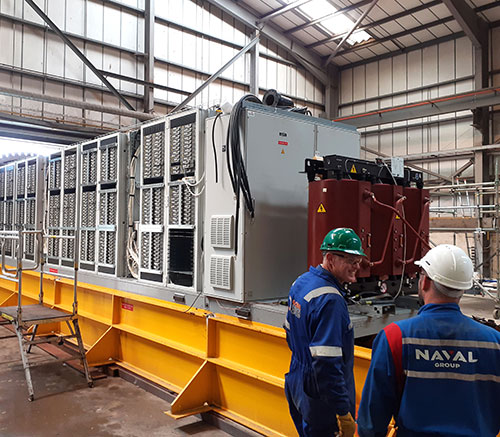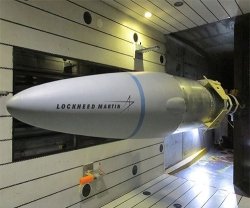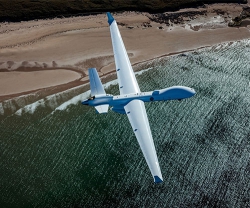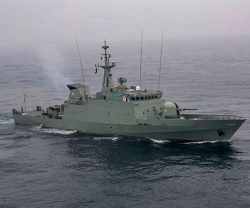In 2018, Naval Group assisted the IT giant in designing, manufacturing and deploying what would become Phase 2 of the Natick Project, a datacenter perfectly integrated inside a subsea structure.
Teams were committed to meeting Microsoft’s requirements, on several sites of Naval Group and its subsidiary Naval Energies, in Brest, Lorient, Cherbourg, Nantes-Indret and Toulon. Within a few months, a stable base was delivered, inspired by Naval Energies’ floating wind turbines, a waterproof capsule able to accommodate many servers within a regulated and monitored environment essential to their longevity and an innovative “umbilical” connector linking the facility to land.
This unusual meeting between a cloud expert and a European leader in naval defense has resulted in a successful deployment of one of the first submerged datacenters, followed by two years of operation and, this year, the recovery of the whole system.
Eric Papin, Chief Technical Officer and Director of Innovation and Technological expertise at Naval Group, comments “Natick is a unique project that has taken part in the development of a trust relationship between two major groups. Naval Group has been able to perfectly meet Microsoft’s requirements by relying on its 400 years of know-how, submarine expertise and robust industrial assets.”
Early last summer, Microsoft, Naval Group and Naval Energies teams, assisted by the local actors Green Marine and the EMEC (European Marine Energy Center), were finally ready to bring the Northern Isles datacenter to the surface. After two years of operation and a successful integration into Microsoft’s cloud, the recovery phase had to be a success.
Stéphane Gouret, the lead architect of the Natick project at Naval Energies, said: “The marine recovery and dismantling operations went remarkably well. It was the result of months of technical exchanges between all the people involved, a strict assessment of all operational risks and, above all, the commitment of amazingly competent people.”
First observation of Project Natick teams, the marine biotope accepted the datacenter which remained intact, “After two years of operation under water, the datacenter surfaced in an excellent global state, accompanied by some algae and barnacles. Later on, the inspection during the onshore dismantling confirmed the very good overall condition of the whole installations,” Gouret confirmed.
After a careful clean-up, the recovery phase was not yet complete, the capsule containing the datacenter off its tripod base was yet to be removed, to deliver it by lorry to the Nigg Energy Park facilities and proceed to its opening. Once the capsule was opened, the teams of Naval Group and Naval Energies were able to extract the servers. At the end of this crucial stage, the teams were satisfied and even impressed with the almost impeccable condition of the installations, only a few servers and cables showed signs of wear and tear.
Spencer Fowers, Principal Researcher for Microsoft’s Special Projects research group, describes his first findings: “Naval Group has been a great partner in establishing a sealed cylinder that allowed us to put these valuable components at the bottom of the ocean, keep them cool, and keep them running 100% of the time while we were deployed […] We see much better reliability in an underwater datacenter than we do on land thanks in large part to the environment that the vessel, created by Naval Group, provided for the servers.”
After analyzing the computer installations, the Microsoft experts found eight times fewer server failures in the submerged datacenter than in land ones. Their hypothesis is that the nitrogen atmosphere, which less corrosive than oxygen, and the absence of physical maintenance often causing unintentional damage on the various components, are the main reasons for this very good ratio. Extensive analyses are underway and lessons from Natick will be taken into consideration in the design and maintenance of land datacenters.
In addition to the achievable savings on equipment, the submerged datacenter has also proven its worth in terms of energy consumption. Connected to the renewable electricity grid of the Orkney Islands in Northern Scotland by Naval Energies’ innovative connector, the submerged datacenter worked flawlessly, using significantly less electricity than would be required by an equivalent land datacenter.
Early conversations about the potential future of Project Natick centered on how to scale up underwater datacenters to power the full suite of Microsoft Azure cloud services, which may require linking together a dozen or more Northern Isles-sized vessels.
Naval Group and Naval Energies’ teams, in collaboration with Microsoft did not wait for the recovery phase to outline the first design of what could be the Natick project in the future. This trust relationship between the two groups will continue to bear fruit.






















